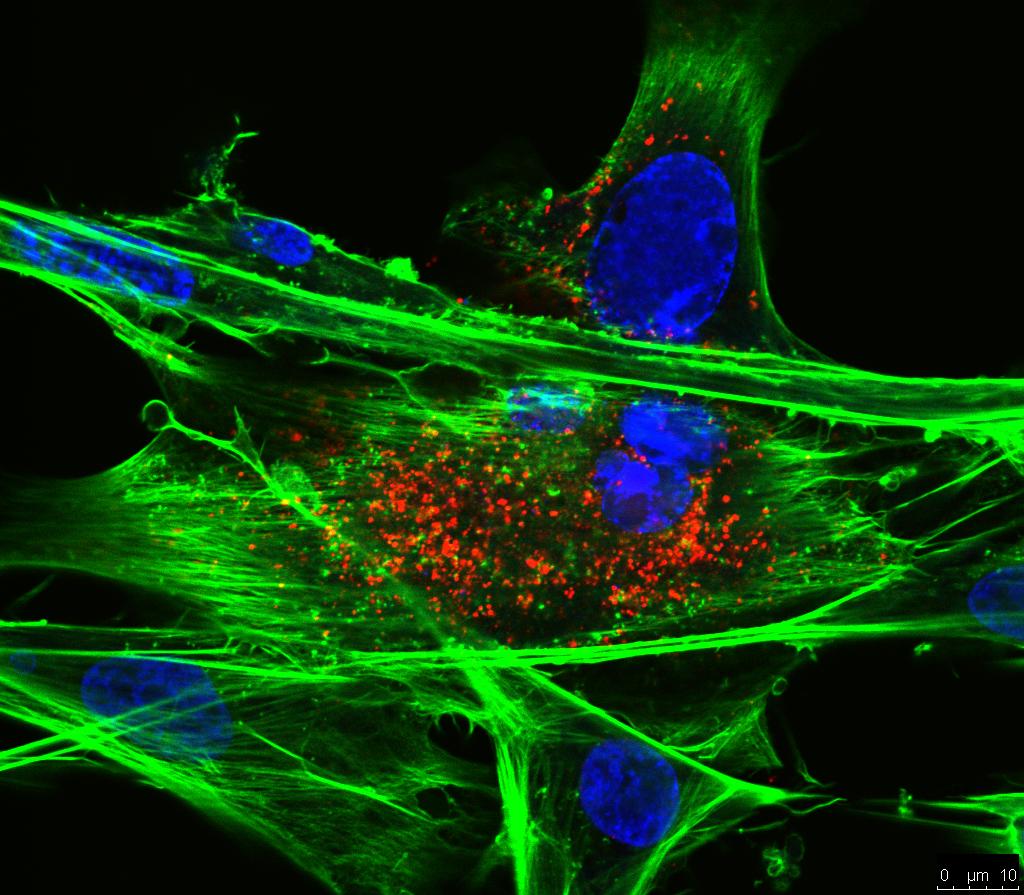Novel insights in the role of Bcl-1 2 homolog Nr-13 (vNr-13) encoded by herpesvirus of turkeys in the virus replication cycle, mitochondrial networks and apoptosis inhibition
Bcl-2 (B cell lymphoma-2)-related gene Nr-13 plays a major role in the regulation of cell death in developing avian B-cells. With over 65% sequence similarity to the chicken Nr-13, herpesvirus of turkeys (HVT)-encoded HVT079 and HVT096 gene product vNr-13 is the first known alphaherpesvirus-encoded Bcl-2 homolog. HVT-infected cells were reported to be relatively more resistant to serum starvation, suggested that vNr-13 could be involved in protecting the cells. Here we describe CRISPR/Cas9-based editing of exon 1 of HVT079 and HVT096 genes from the HVT genome to generate the mutant HVT-ΔvNr-13 to gain insights into its functional roles. Overall, both wild type HVT and HVT-ΔvNr-13 showed similar growth kinetics; however, at early time points, HVT-ΔvNr-13 showed lower growth of 1.3- to 1.7-fold of cell-associated virus and 3- to 6.2- fold of cell-free virus. In the transfected cells, HVT vNr-13 mainly showed diffuse cytoplasmic distribution with faint nuclear staining. Further, vNr-13 localized to the mitochondria and endoplasmic reticulum (ER), and demonstrated to disrupt mitochondrial network morphology in the transfected cells. In the wildtype HVT-infected cells, vNr-13 expression appeared to be directly involved in the disruption of the mitochondrial network, as the mitochondrial network morphology was substantially restored in the HVT-ΔvNr-13-infected cells. IncuCyte(R) S3 real time apoptosis monitoring demonstrated that vNr-13 unequivocally involved in the apoptosis inhibition, and it is associated with increase of PFU, especially at serum-free conditions of later stages of viral replication cycle. Furthermore, HVT blocks apoptosis in infected cells, but activates apoptosis in the non-infected bystander cells.
Importance
B cell lymphoma-2 (Bcl-2)-family proteins play important role in regulating apoptosis during homeostasis, tissue development and infectious diseases. Several viruses encode homologs of cellular Bcl-2-proteins (vBcl-2) to inhibit apoptosis, which enable them to replicate and persist in the infected cells and to evade/modulate the immune response of the host. Herpesvirus of turkeys (HVT) is a non-pathogenic alphaherpesvirus of turkeys and chickens, widely used as live vaccine against Marek's disease and recombinant vaccine viral vectors for protecting against multiple avian diseases. Identical copies of the HVT genes HVT079 and HVT096 encode the Bcl-2 homolog vNr-13 While previous studies have identified the potential ability of vNr-13 in inhibiting apoptosis induced by serum deprivation, detailed investigations on the functions of vNr-13 are unknown. Using CRISPR/Cas9-based ablation of vNr-13 gene, we demonstrated HVT vNr-13 role in early stages of viral replication cycle, mitochondrial morphology disruption, and apoptosis inhibition in later stages of viral replication.
